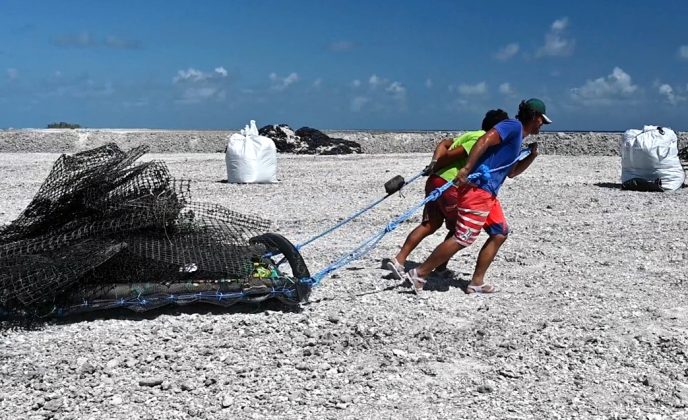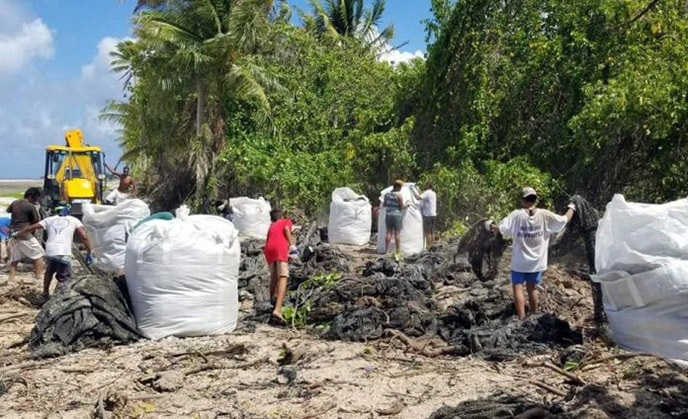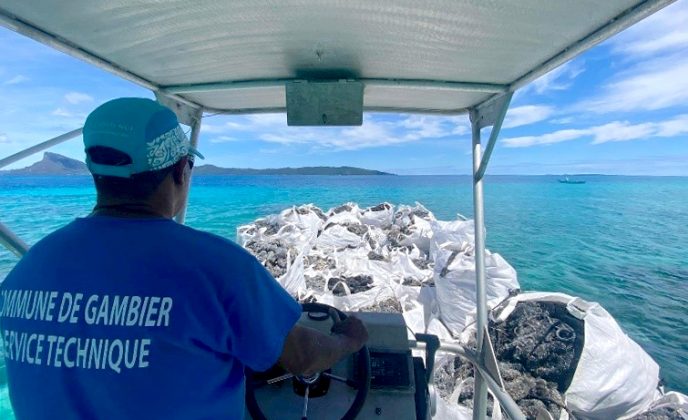This operation marks a significant step in managing pearl farming waste, contributing to the preservation of Polynesian lagoons and establishing sustainable waste management practices for the pearl industry.
Objectives and Targeted Areas
Launched in 2021, the initiative focuses on islands where pearl farming waste is most prevalent, including:
Apataki, Arutua, Ahe, Manihi, Takaroa, Takapoto, Aratika, Kaukura, Fakarava, Raiatea, Tahaa, and Gambier.
These islands were selected based on two key criteria:
- The presence of historical waste from past practices,
- Current high pearl farming activity, generating substantial waste.
Types of Waste Collected
Pearl farming waste includes various materials used in pearl farms:
- Ropes,
- Collectors,
- Buoys,
- Protective nets (essential for pearl farming but harmful to the marine environment when discarded).
Collection and Disposal Methodology
To ensure efficient waste management, the DRM implemented a structured collection system:
- “Big bags” were distributed to pearl farmers, who then formed local management committees in collaboration with community associations.
- Municipalities provided technical and logistical support for waste storage and transport to docks.
- The government organized the shipment of waste to Tahiti, where it is processed in approved facilities.
Results and Next Steps
Between November 2021 and March 2022, the operation successfully collected and treated 1,010 big bags (approximately 1,000 m³ of waste). A major shipment of 574 big bags was recently transported via the vessels Cobia 3 and Mareva Nui.
Cleanup efforts will continue throughout the year, with Phase 2 focusing on removing waste from lagoons, in addition to land-stored debris. This initiative is part of a broader program to establish sustainable and eco-friendly pearl farming waste management, safeguarding marine ecosystems and reinforcing Polynesia’s reputation as a responsible player in the pearl industry.
Expected Impact
This initiative is set to:
✔ Reduce the environmental footprint of pearl farming,
✔ Improve lagoon health (critical for pearl oyster survival),
✔ Raise awareness among farmers about responsible waste management,
✔ Strengthen cooperation between local stakeholders, authorities, and communities for shared, sustainable natural resource management.
By combining environmental cleanup with cross-sector collaboration, this operation serves as a model for marine conservation and supports the long-term viability of Polynesia’s pearl industry.





Leave a Reply